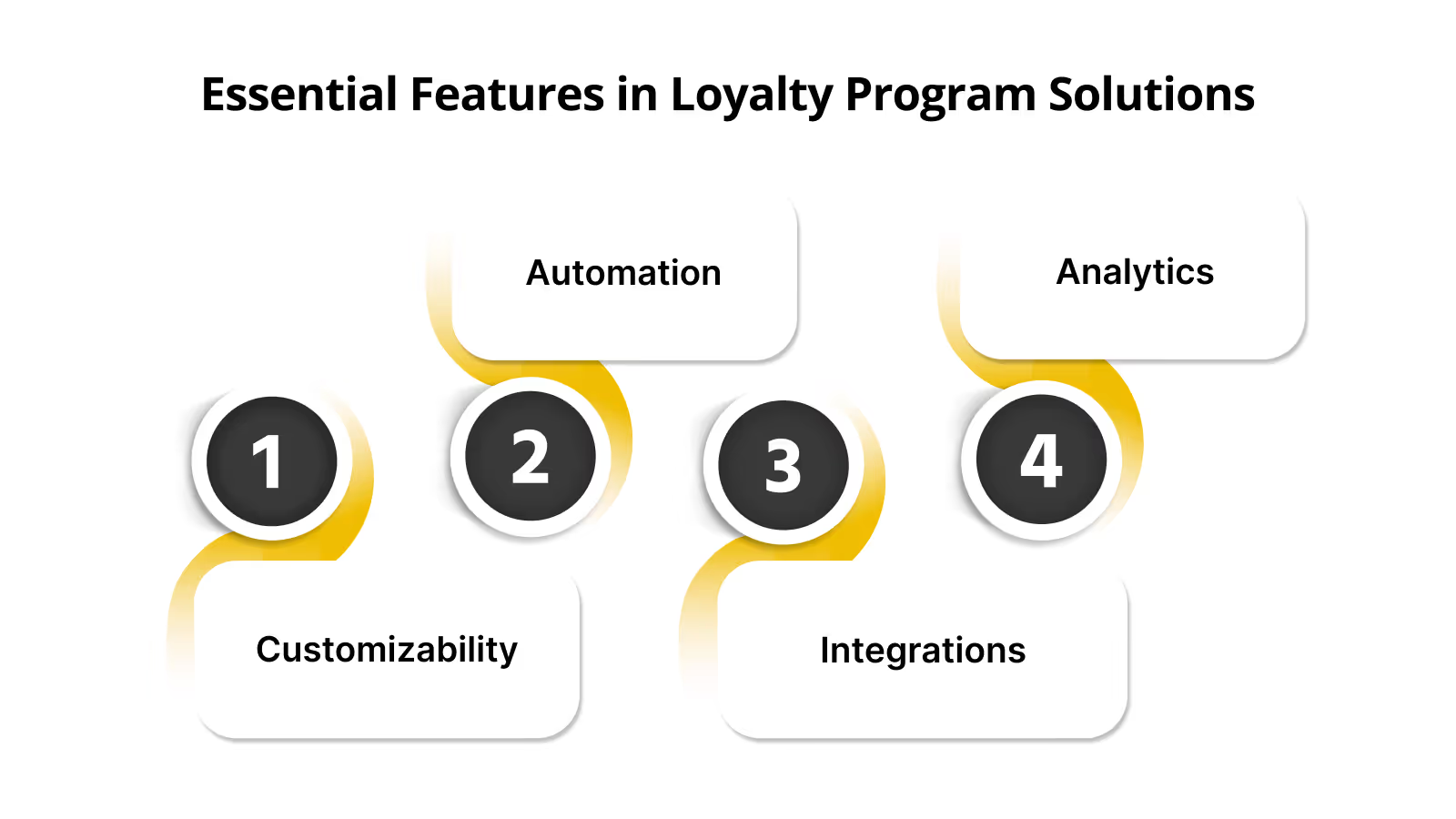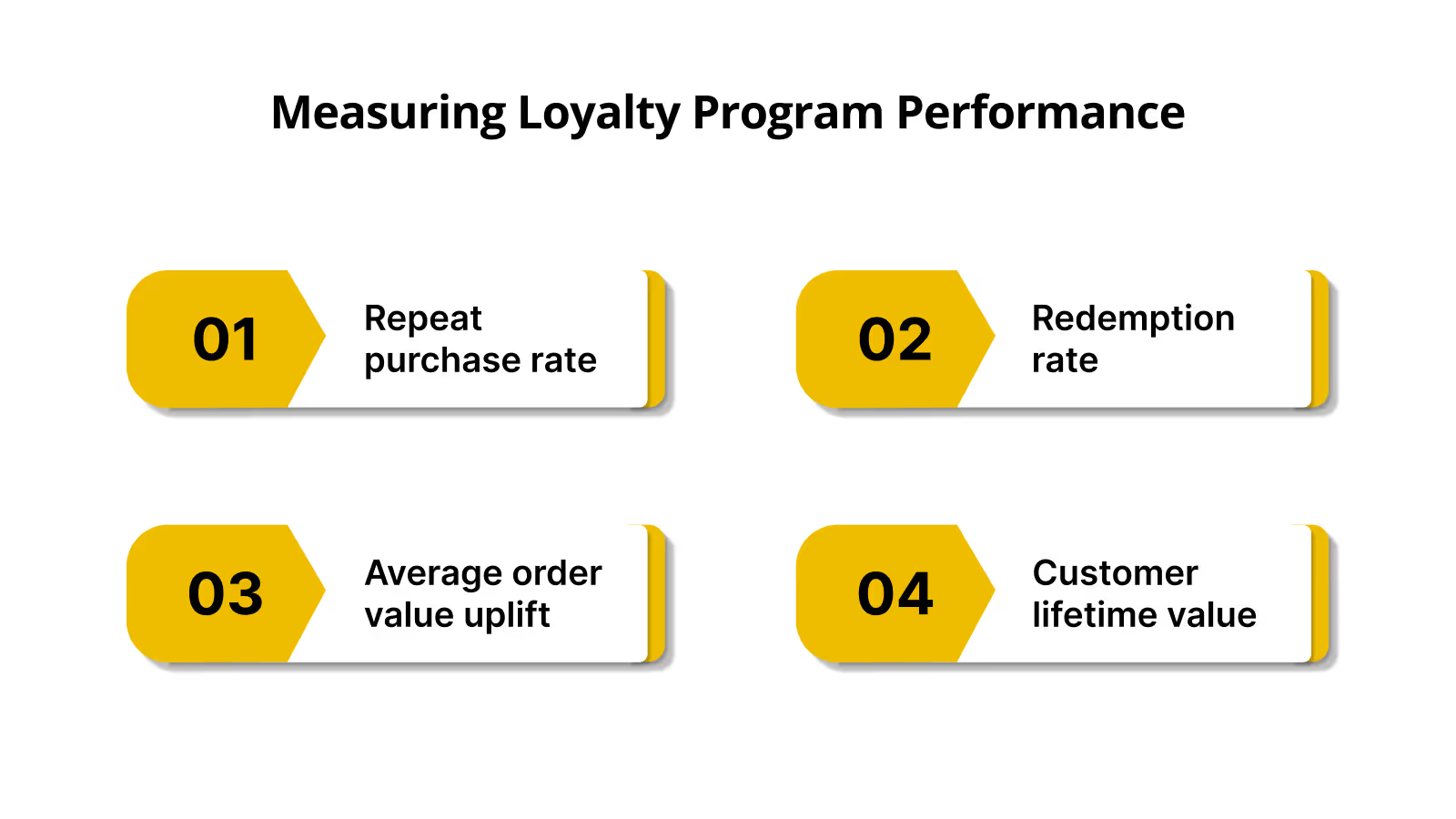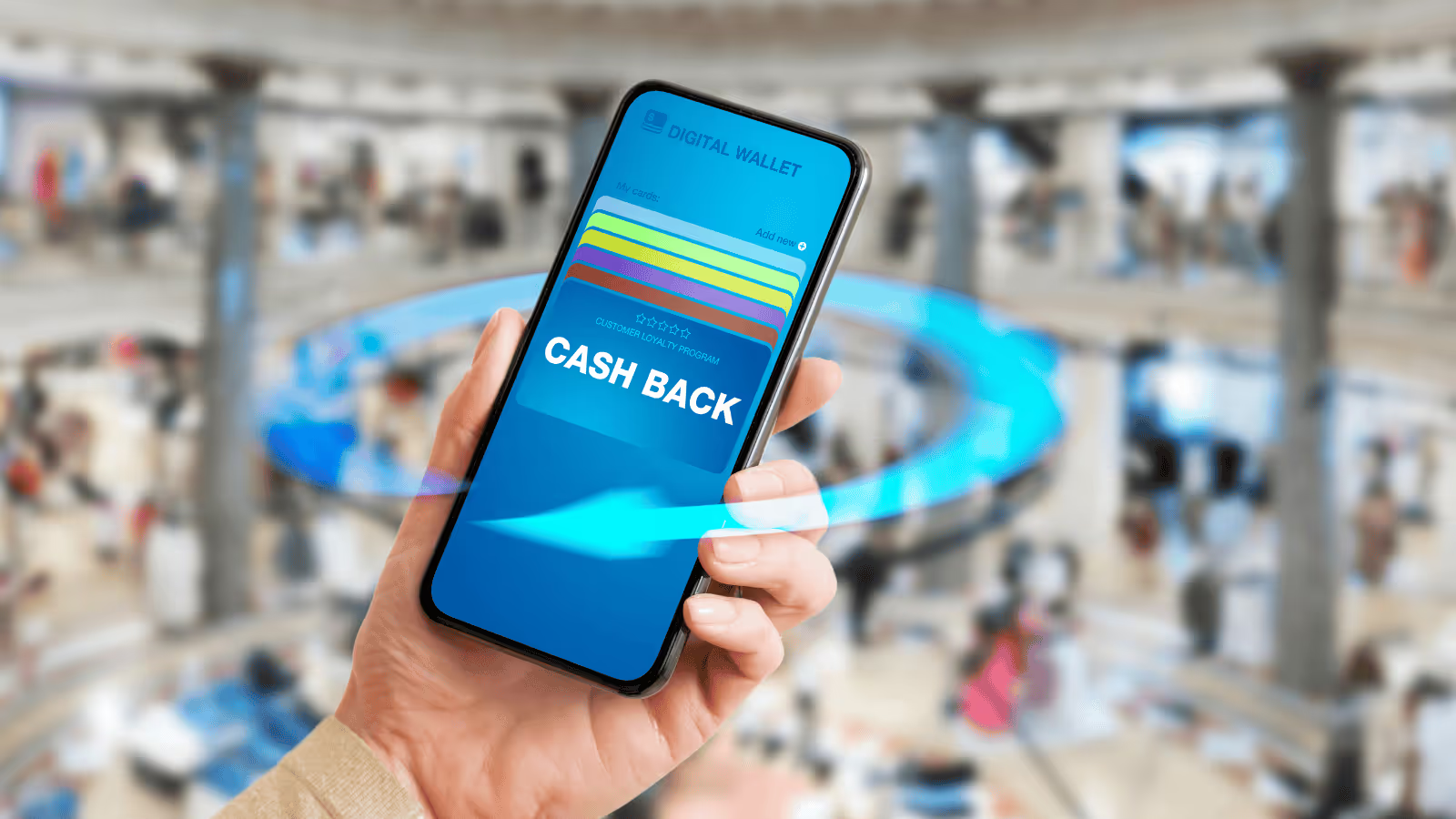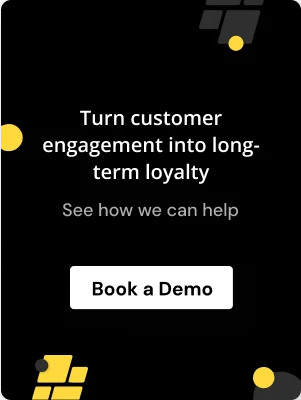.avif)
.avif)
Global retail e-commerce sales are projected to hit $6.419 trillion in 2025, marking a 6.8% year-over-year increase - the slowest growth rate since 2022. Even with this slowdown, e-commerce is expected to account for 20.5% of all retail sales worldwide in 2025, up from 19.9% in 2024, and the sector is set to keep expanding through 2028.
For many founder‑led stores and growing DTC brands, these numbers don’t signal easy growth; they underline just how competitive the landscape has become. Customer acquisition costs are climbing, ad channels are oversaturated, and discount‑driven strategies often lead to one‑time purchases instead of lasting loyalty. In a market that’s growing slower than before, the challenge isn’t just attracting customers; it’s keeping them.
This is why loyalty programs have shifted from a nice‑to‑have to a core retention strategy. When designed thoughtfully, they go beyond repeat purchases, helping brands understand buyer behavior, create ongoing engagement, and build revenue streams that are more predictable than ad‑driven spikes.
In this blog, we’ll break down what loyalty programs are, explore different models that suit various business stages, and outline practical steps for integrating them into your growth strategy, whether you’re running a lean DTC team, scaling a fast‑growing brand, or advising clients as part of an agency.
Key Takeaways
- Loyalty programs are essential for sustainable e‑commerce growth, driving retention, repeat purchases, and higher lifetime value.
- Different models work for different goals - points for simplicity, tiers for status‑driven engagement, cashback/coalitions for value‑seeking customers.
- Automation and analytics are critical to avoid manual overhead and to measure impact (repeat purchase rate, AOV, LTV).
- Integration matters - loyalty programs should work seamlessly with your store, CRM, and marketing tools.
- Platforms like Nector simplify this by combining loyalty, referrals, and reviews in one customizable, data‑driven solution.
What Is a Loyalty Program?
A loyalty program is more than just awarding points for purchases; it’s a structured way to build stronger customer relationships through ongoing engagement. This can include purchases, referrals, reviews, social interactions, and other behaviors that deepen brand involvement.
In the current e-commerce landscape, where bringing in new customers is expensive, loyalty programs take on an equally important role: retaining existing customers and uncovering valuable insights about their behavior. Rather than relying solely on discounts or one‑off campaigns, they introduce consistent, structured incentives that keep customers engaged over time.
The design of these programs often reflects the business’s size and resources. Smaller DTC teams tend to favor automated workflows for enrollment, points allocation, and notifications to minimize daily management. Larger organizations may implement more advanced features, like customer segmentation, personalized campaigns, and tailored earning or redemption rules across multiple regions or product categories.
Core Types of Loyalty Program Services

Once the purpose and structure of a loyalty program are clear, the next step is understanding the different models available. There’s no single template for a successful loyalty program. The right approach depends on what motivates your customers to stay engaged and what your team can manage consistently. Here are some common types of programs:
Point-based programs
Points-based programs are often the simplest to set up. Customers earn points for actions such as making purchases, referring friends, or leaving reviews, which they can later redeem for rewards. This approach gives customers a tangible way to track their progress and can encourage them to engage with your brand more often.
Tiered loyalty programs
These programs often introduce levels such as Silver, Gold, or Platinum to encourage ongoing engagement. This structure is commonly used by brands in beauty, lifestyle, or consumer goods, where repeat purchases are frequent. Tiers create a sense of exclusivity, making customers feel rewarded for their continued loyalty while motivating them to reach higher levels.
Cashback and coalition programs
These programs focus on delivering immediate or shared value. Cashback offsets spending directly, while coalition programs allow customers to earn and use rewards across multiple brands, making them especially relevant for businesses managing several brands or partnerships. In practice, many companies adopt hybrid models, combining elements like points, tiers, and cashback.
An effective loyalty program balances customer motivation with what teams can realistically maintain. Often, beginning with a straightforward structure and gradually adding complexity as the program evolves results in a more sustainable long-term approach. Platforms like Nector make this easier by helping brands set up customizable, gamified programs that drive retention and repeat purchases without adding extra operational burden.

How Tiered Business Models Improve Loyalty Programs
Tiered models are powerful because they build progression into the customer journey. Instead of flat rewards, each level brings new motivation to engage more with the brand.
For customers, tiers deliver:
- Clear goals to work toward
- Increasingly valuable perks like free shipping, early access, or exclusive discounts
- A sense of status and recognition that goes beyond transactions
For businesses, tiers enable:
- Automatic segmentation based on spend or engagement
- Scalable ways to identify and nurture high-value customers
- Entry-level incentives to guide newer customers upward
- Reduced reliance on discounts by offering status-driven rewards such as VIP events, priority service, or personalized offers
Done well, this structure creates a self-reinforcing loop: customers stay motivated to climb higher, while brands strengthen retention and protect margins.
Read: 2025 DTC Trends: How Shopify Brands Can Stay Ahead with Loyalty and Retention
Essential Features in Loyalty Program Solutions

When comparing platforms, it’s worth focusing on features that have a direct impact on performance:
- Customizability: A loyalty program should mirror your brand identity across every touchpoint. This means defining how rewards are earned, setting clear progression for tiers, and ensuring the program’s design aligns with your customer experience instead of relying on generic templates.
- Automation: Manual tracking or running ad‑hoc reward campaigns quickly becomes unsustainable. Automated systems can handle routine tasks such as assigning points, upgrading customers to new tiers, or sending reward notifications, allowing your team to concentrate on refining strategy rather than day‑to‑day administration.
- Integrations: A loyalty program delivers greater value when it’s part of a connected ecosystem. Integrating it with your e‑commerce platform, CRM, and marketing tools makes it possible to design behavior‑based campaigns and deliver rewards that fit naturally into each customer’s journey.
- Analytics: Real‑time access to data, including redemption rates, repeat purchase behavior, and customer lifetime value, allows teams to assess program performance and make evidence‑based adjustments instead of relying on assumptions.
Many modern platforms bring these capabilities together. For instance, Nector provides pre‑configured features like branded rewards pages and campaign‑based bonuses while integrating with systems such as Shopify Multipass, Klaviyo, and Judge.me. This enables teams to sync loyalty data with their existing e‑commerce and marketing workflows. Its real‑time dashboards track patterns like redemption activity and purchase frequency, helping operators evaluate how customers are engaging with the program.
Overcoming Operational Challenges in Loyalty Programs
Designing a loyalty program is one thing; running it smoothly is another. Many programs don’t fail because of strategy, but because operational issues quietly reduce their impact. When execution slows down, customers notice.
Common challenges include:
- Fraud and misuse: Fake referrals or duplicate accounts can erode profitability.
- Irrelevant rewards: Perks that don’t match customer expectations reduce engagement.
- Manual processes: Spreadsheets for redemptions, manual referral checks, or hand-built reports create heavy admin work and distract from improving the program.
These problems usually surface as programs grow and retention efforts scale. Automation helps by handling fraud detection, referral tracking, and reward notifications in the background. Tools like Nector, with built-in fraud protection, automated referral checks, and configurable notifications, make it easier to keep operations consistent while giving teams more space to refine strategy and strengthen engagement.
Measuring Loyalty Program Performance

Launching a loyalty program is only the first step. To understand its real impact, teams need to track how it affects customer behavior and whether it supports long‑term business objectives. Certain key performance indicators (KPIs) help evaluate effectiveness:
- Repeat purchase rate: Comparing how often members return versus non‑members helps assess whether the program fosters ongoing engagement.
- Redemption rate: Measuring how frequently earned rewards are used can indicate whether incentives are relevant and accessible.
- Average order value (AOV) uplift: Tracking whether loyalty members spend more per transaction than non‑members shows the program’s influence on purchasing behavior.
- Customer lifetime value (LTV): Examining whether participants generate greater revenue over time highlights the program’s role in strengthening retention.
Collecting this data can require significant effort if it involves multiple tools or manual reporting.
Choosing the Right Loyalty Solution for Your Business
Selecting a loyalty platform goes beyond comparing checklists of features. The real consideration is whether the solution can adapt to your team’s capacity, align with your customers’ motivations, and support your long‑term growth strategy.
Team capacity matters:
The size and structure of your team should guide the platform you choose. For solo founders or lean teams, ease of use is critical. Platforms that automate workflows such as points assignment, tier upgrades, and notifications help reduce the time spent on day‑to‑day operations. A quick setup process and low‑maintenance configuration also prevent retention programs from becoming a burden.
In contrast, growth‑stage businesses and enterprise teams may require more advanced functionality. These organizations often need fine‑grained controls for segmenting customers, running multi‑channel campaigns, and customizing earning and redemption rules across different regions or product lines. Choosing a platform that can scale alongside operational complexity reduces the risk of costly transitions later.
Customer motivation is key:
No two customer bases are alike, and program success depends on what drives participation. For price‑sensitive shoppers, cashback or store credit can offer immediate, tangible value.
For audiences motivated by exclusivity, tiered rewards or VIP perks create a sense of progression and belonging. Communities that value access and experiences may respond more to early product launches, members‑only content, or special event invitations. Mapping out these motivations ensures that rewards feel relevant and aligned with customer expectations.
Linking to growth goals:
The design of a loyalty program should connect directly to broader business objectives. For example:
- To drive purchase frequency: Points‑based systems with attainable, recurring rewards may help incentivize repeat visits and smaller, more frequent orders.
- To expand acquisition through referrals: Combining loyalty with referral workflows can encourage existing customers to bring in new buyers while being rewarded for their advocacy.
By aligning platform capabilities with team bandwidth, customer motivations, and growth objectives, businesses can develop loyalty strategies that are better suited for both current needs and future scalability.
Read: Effective Tiered Reward Levels and Benefits Guide

Wrapping Up
In e‑commerce today, keeping customers loyal is as important as attracting them in the first place. Loyalty programs work best when they are built on a clear understanding of what your customers value, whether that’s discounts, status, or exclusive experiences.
The right program also needs to be easy to run and easy to measure. This is where using a platform with built‑in automation, analytics, and integrations can help simplify the process and give you a clearer view of what’s working. By combining thoughtful program design with the right tools, you can create a loyalty strategy that grows with your business and keeps customers coming back for the right reasons.
If you’re exploring how to build or refine a program like this, it may be worth reviewing platforms like Nector that bring loyalty, referrals, and analytics together in one place to see how they could fit your needs. Book a Demo today!
FAQs
What is a loyalty program, and why does it matter?
It’s a structured way to reward customers for repeat engagement. For DTC brands, it’s a cost-effective retention strategy compared to acquisition-heavy growth.
How do tiered loyalty programs work?
They create customer segments based on engagement (e.g., Silver, Gold, Platinum) with escalating rewards and exclusive perks.
Which loyalty model is best for my business?
It depends on your goals. Point-based programs are simple, tiered programs build engagement, and cashback models appeal to value-driven shoppers.
How can I measure if my loyalty program is working?
Track metrics like repeat purchase rate, redemption rates, AOV, and customer lifetime value (LTV).
Can I run loyalty, referral, and review programs together?
Yes. Platforms like Nector combine loyalty, referral, and review workflows in one integrated dashboard, saving time and increasing impact.
Start Building Customer Retention That Lasts






.webp)



